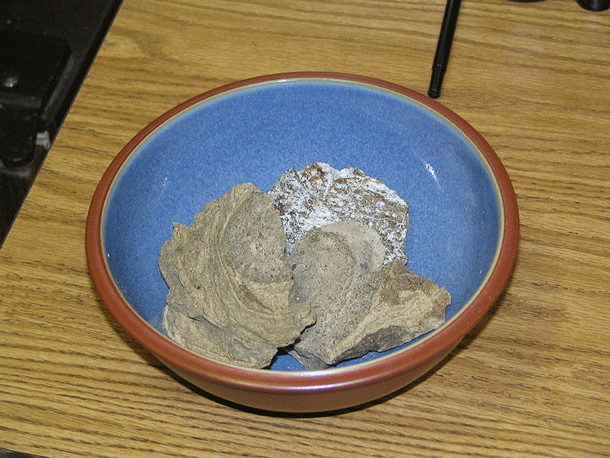Science Note: Synthetic Ambergris
Air Date: Week of September 21, 2012

Ambergris has been a key ingredient in fine perfumes for centuries. (Peter Kaminski)
Ambergris is regurgitated by Sperm whales and valued by perfumers. But natural ambergris could soon be replaced by a laboratory-made alternative.
Transcript
CURWOOD: It's Living on Earth - I'm Steve Curwood. Just ahead - the tale of a bird that fills a useful environmental role - yet looks weird and is widely despised. First this note on emerging science from Mary Bates.
[SCIENCE NOTE THEME]
BATES: For centuries, perfumers have relied on a substance with the poetic name of ambergris to help fragrances stay on people’s skin longer. But ambergris has less than poetic origins: it’s nothing more than vomit from sperm whales. Now scientists are closing in on a synthetic alternative that will leave whales out of the perfume-making business.
When whales consume sharp objects like seashells or squid beaks, their guts coat the items in a protective, sticky substance. They regurgitate the waxy, gray balls and the gobs wash ashore – on coasts from the Bahamas to Australia, where harvesters manually collect them.
Collecting ambergris is time-intensive and there are fears that demand may encourage poaching of the endangered whales, which have intestines full of the stuff. But now, researchers from the University of British Columbia have identified a gene in balsam fir trees that could lead to the production of synthetic ambergris.
The gene enables the fir tree to produce a compound called cis-abienol, which has properties similar to ambergris. Scientists transferred the gene into yeast cells, which were then able to produce the compound quickly and efficiently.
This technique could produce an ambergris alternative that’s less expensive and more sustainable. And the fragrance industry is betting that ambergris by any other name will smell just as sweet. That’s this week’s Note on Emerging Science, I’m Mary Bates.
[SCIENCE NOTE THEME]
Links
Living on Earth wants to hear from you!
Living on Earth
62 Calef Highway, Suite 212
Lee, NH 03861
Telephone: 617-287-4121
E-mail: comments@loe.org
Newsletter [Click here]
Donate to Living on Earth!
Living on Earth is an independent media program and relies entirely on contributions from listeners and institutions supporting public service. Please donate now to preserve an independent environmental voice.
NewsletterLiving on Earth offers a weekly delivery of the show's rundown to your mailbox. Sign up for our newsletter today!
 Sailors For The Sea: Be the change you want to sea.
Sailors For The Sea: Be the change you want to sea.
 The Grantham Foundation for the Protection of the Environment: Committed to protecting and improving the health of the global environment.
The Grantham Foundation for the Protection of the Environment: Committed to protecting and improving the health of the global environment.
 Contribute to Living on Earth and receive, as our gift to you, an archival print of one of Mark Seth Lender's extraordinary wildlife photographs. Follow the link to see Mark's current collection of photographs.
Contribute to Living on Earth and receive, as our gift to you, an archival print of one of Mark Seth Lender's extraordinary wildlife photographs. Follow the link to see Mark's current collection of photographs.
 Buy a signed copy of Mark Seth Lender's book Smeagull the Seagull & support Living on Earth
Buy a signed copy of Mark Seth Lender's book Smeagull the Seagull & support Living on Earth

